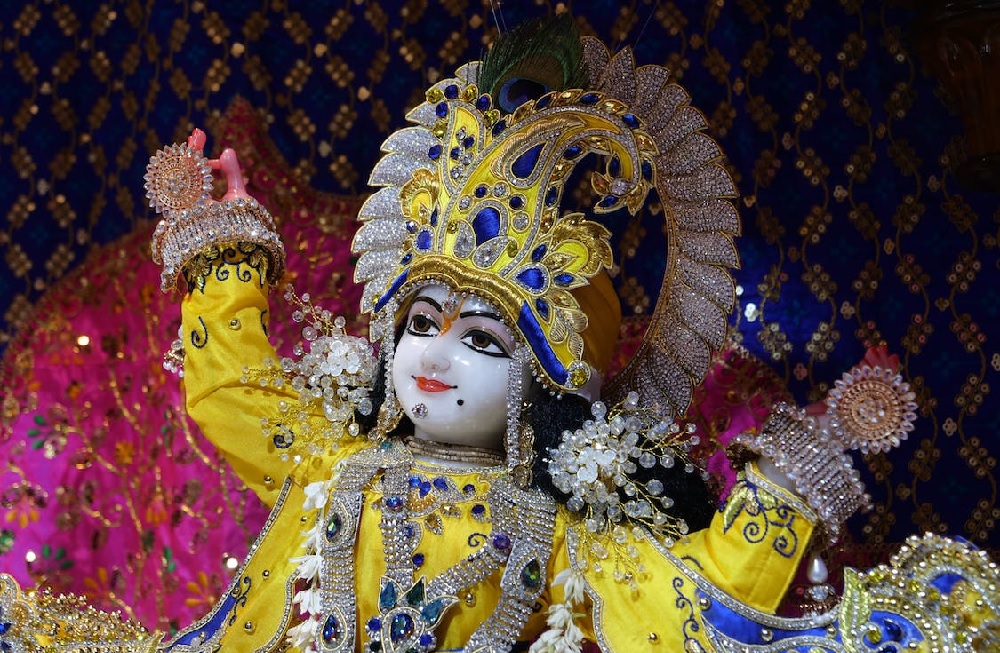Janmashtami: Celebrating the Birth of Lord Krishna
Janmashtami, also known as Krishna Janmashtami, is a significant Hindu festival celebrated with fervor and devotion across India and around the world. It marks the birth anniversary of Lord Krishna, the eighth incarnation of Lord Vishnu and a beloved deity in Hinduism. This auspicious occasion is observed on the eighth day of the Krishna Paksha (dark fortnight) in the month of Bhadrapada, according to the Hindu lunar calendar, which usually falls in August or September.
The Mythical Significance: The festival’s essence lies in celebrating the divine incarnation of Lord Krishna, who was born to Devaki and Vasudeva in Mathura. His birth was a remarkable event, with cosmic occurrences like the sky lighting up and divine voices resonating. It is believed that Lord Krishna took birth to restore dharma (righteousness) and to protect the virtuous.
The Preparations: Janmashtami preparations commence days in advance. Homes and temples are adorned with colorful decorations, and the surroundings exude a festive atmosphere. People engage in cleaning, decorating, and beautifying their homes and surroundings as an expression of their devotion and readiness to welcome Lord Krishna.
The Fasting and Devotion: Janmashtami is a day of fasting and prayer for many devotees. They observe a strict fast until midnight, the time when Lord Krishna is believed to have been born. Devotees spend the day chanting devotional songs and mantras, reading sacred texts like the Bhagavad Gita, and engaging in acts of kindness and charity.
Midnight Celebrations: The peak of Janmashtami celebrations arrives at midnight, the time when Lord Krishna was born. Temples and homes resonate with the sound of devotional music, hymns, and religious discourses. The atmosphere is charged with spirituality as devotees eagerly await the auspicious moment.
The Rituals: The rituals associated with Janmashtami vary across regions and communities, but some common practices include:
- Swinging Baby Krishna: Idols of baby Krishna are placed in cradles and gently swung to symbolize the divine infant’s birth.
- Rasa Lila Performances: In some regions, the enchanting dance-drama of Lord Krishna’s playful interactions with the gopis (cowherd girls) is enacted.
- Dahi Handi: This famous ritual involves forming human pyramids to reach and break pots of curd and buttermilk hung at a height, imitating the young Krishna’s mischievous nature.
Celebrations Across India: Janmashtami celebrations differ in various regions, reflecting local customs and traditions. Mathura, the birthplace of Lord Krishna, and Vrindavan, where he spent his childhood, witnessed grand festivities. In Maharashtra, the Dahi Handi ritual takes center stage, while in Gujarat, elaborate Raas Leela performances captivate audiences.
The Message of Janmashtami: Beyond the rituals and festivities, Janmashtami carries profound spiritual and moral messages. The life of Lord Krishna is replete with teachings on duty, righteousness, compassion, and devotion. His interactions with devotees, his role as a protector, and his embodiment of divinity inspire people to follow the path of righteousness and seek spiritual enlightenment.
Conclusion: Janmashtami is more than a religious celebration; it’s an opportunity for devotees to connect with their spiritual roots and honor the timeless wisdom and teachings of Lord Krishna. As they offer prayers, immerse themselves in devotion, and participate in joyous celebrations, they draw inspiration from the life of Krishna and strive to embody his virtues in their own lives. Janmashtami, therefore, transcends time and geography, uniting hearts in the reverence of Lord Krishna’s divine presence.

